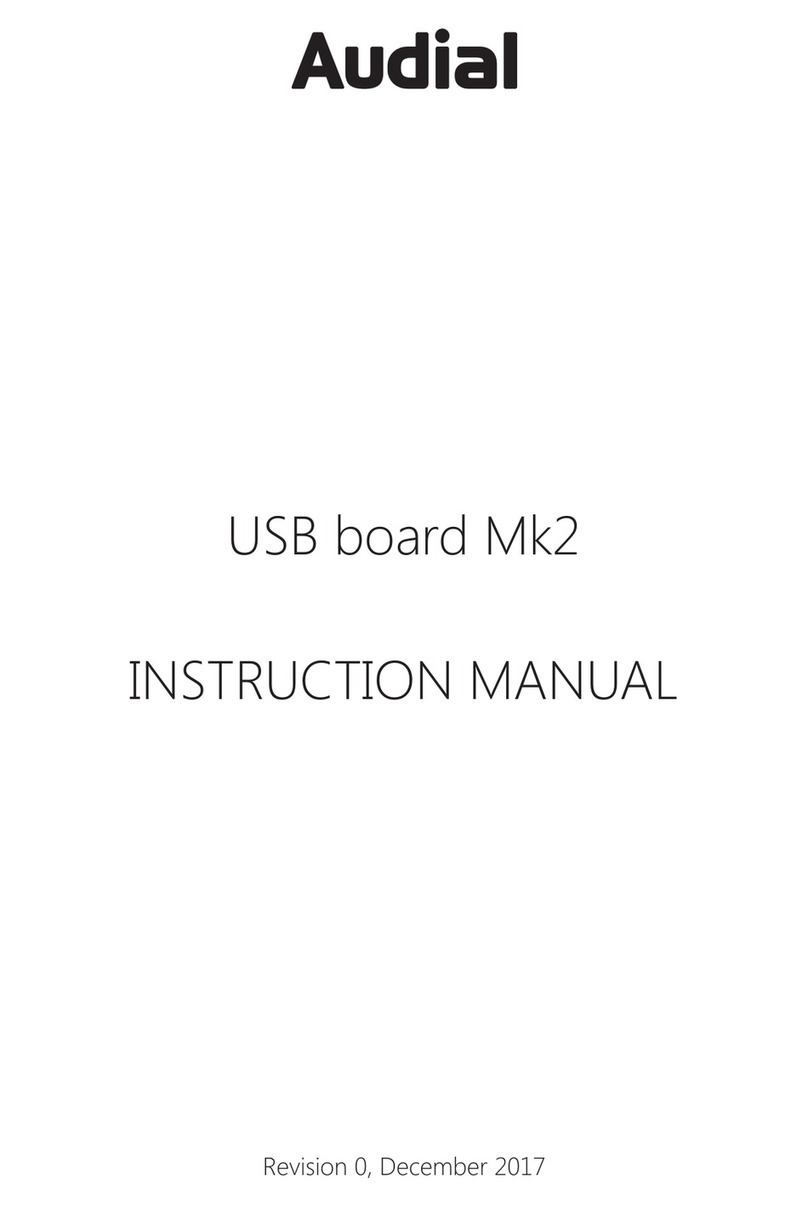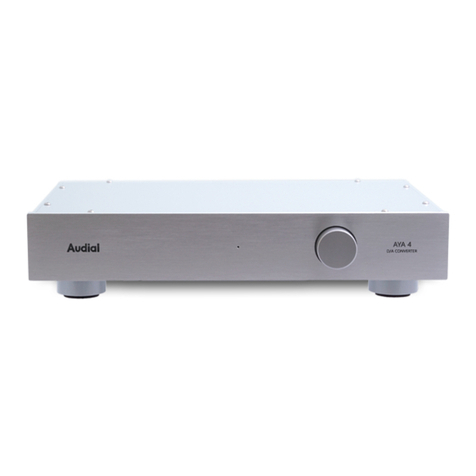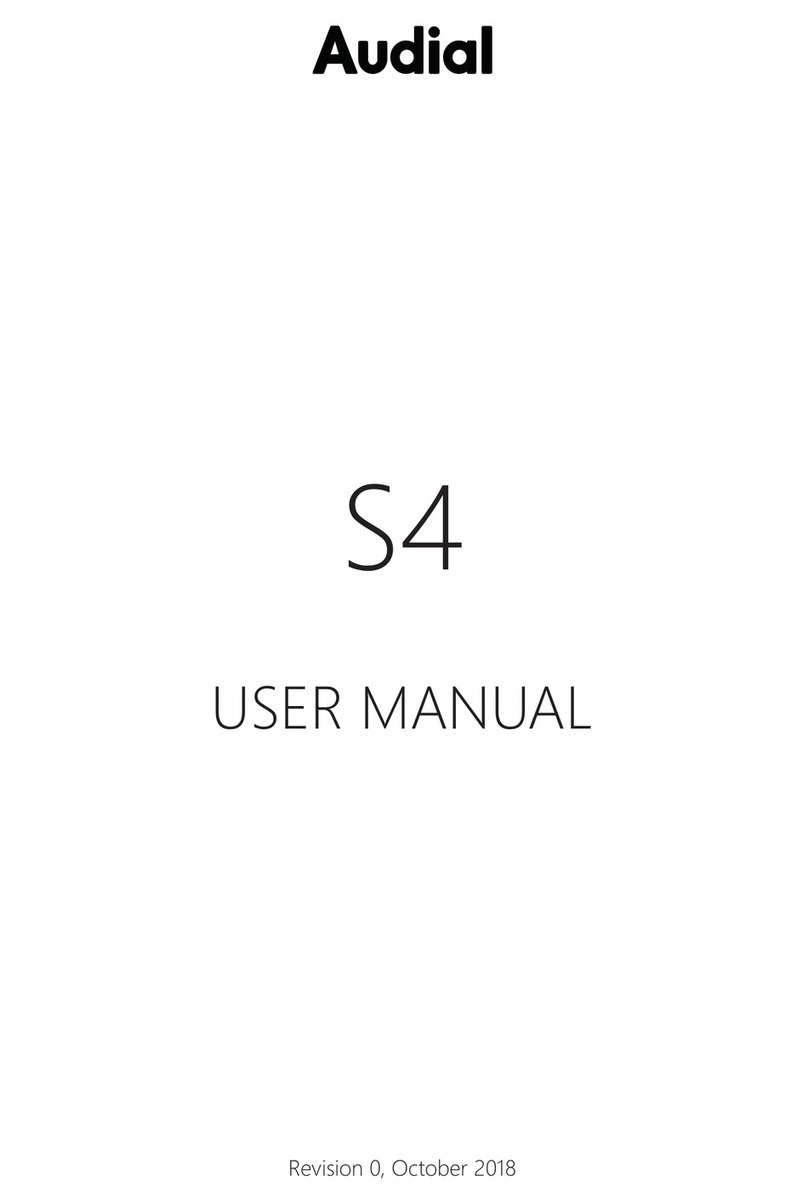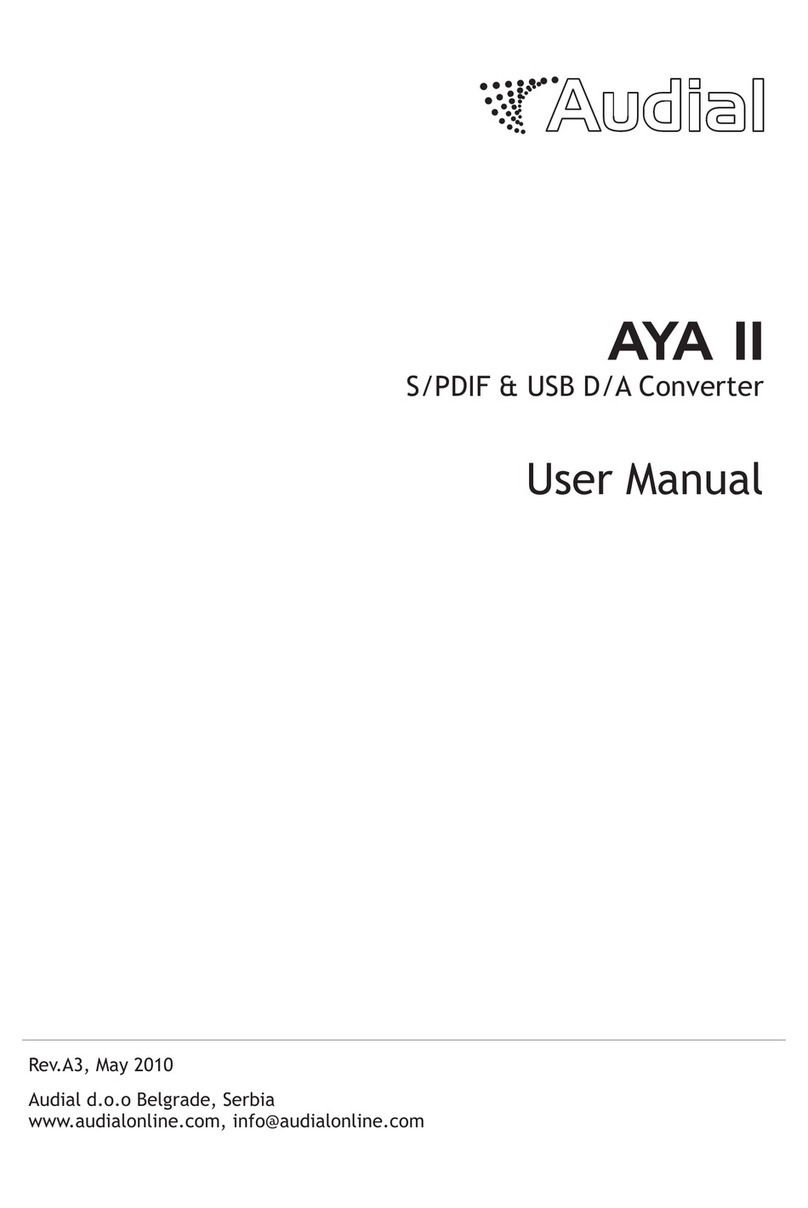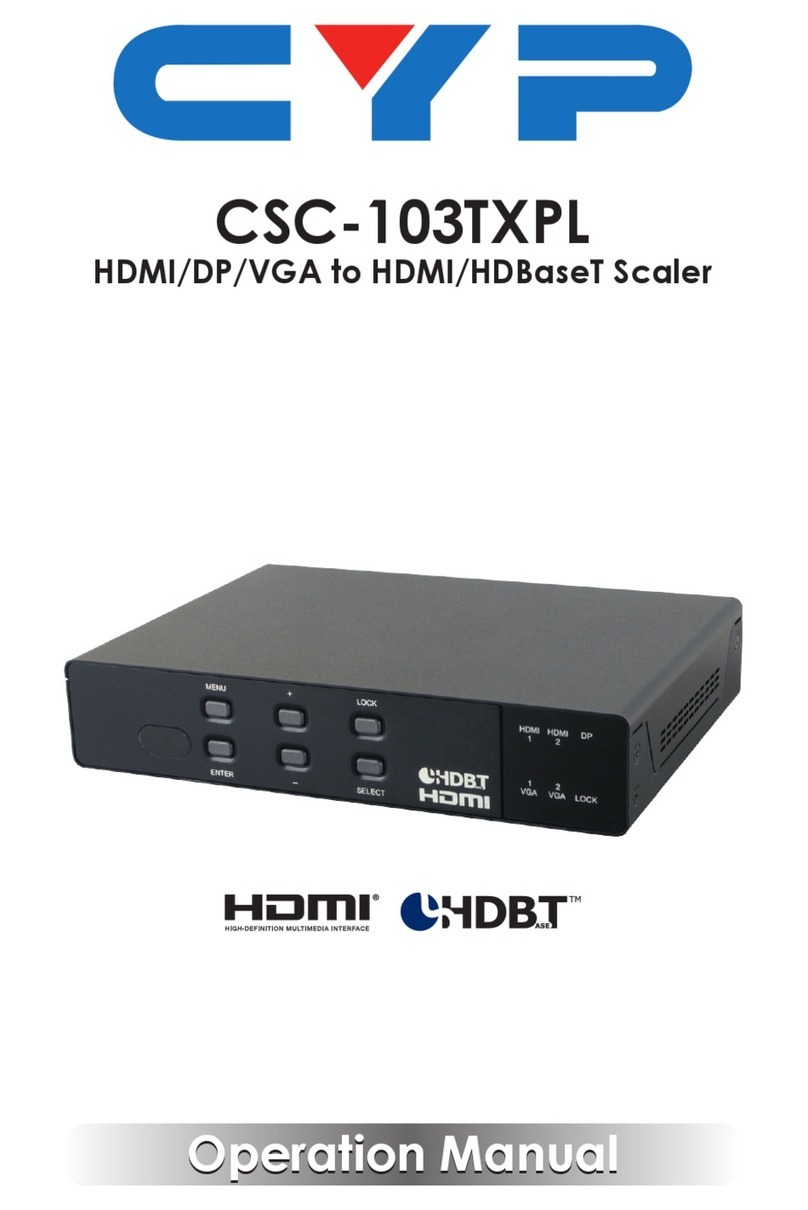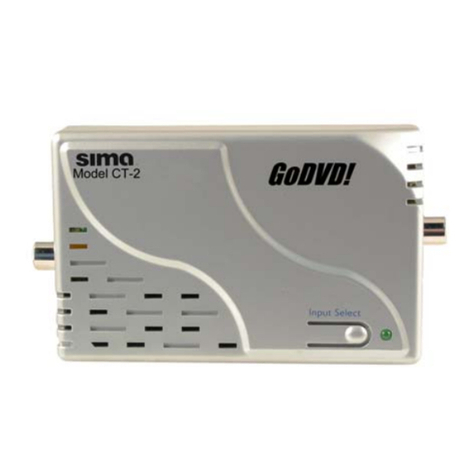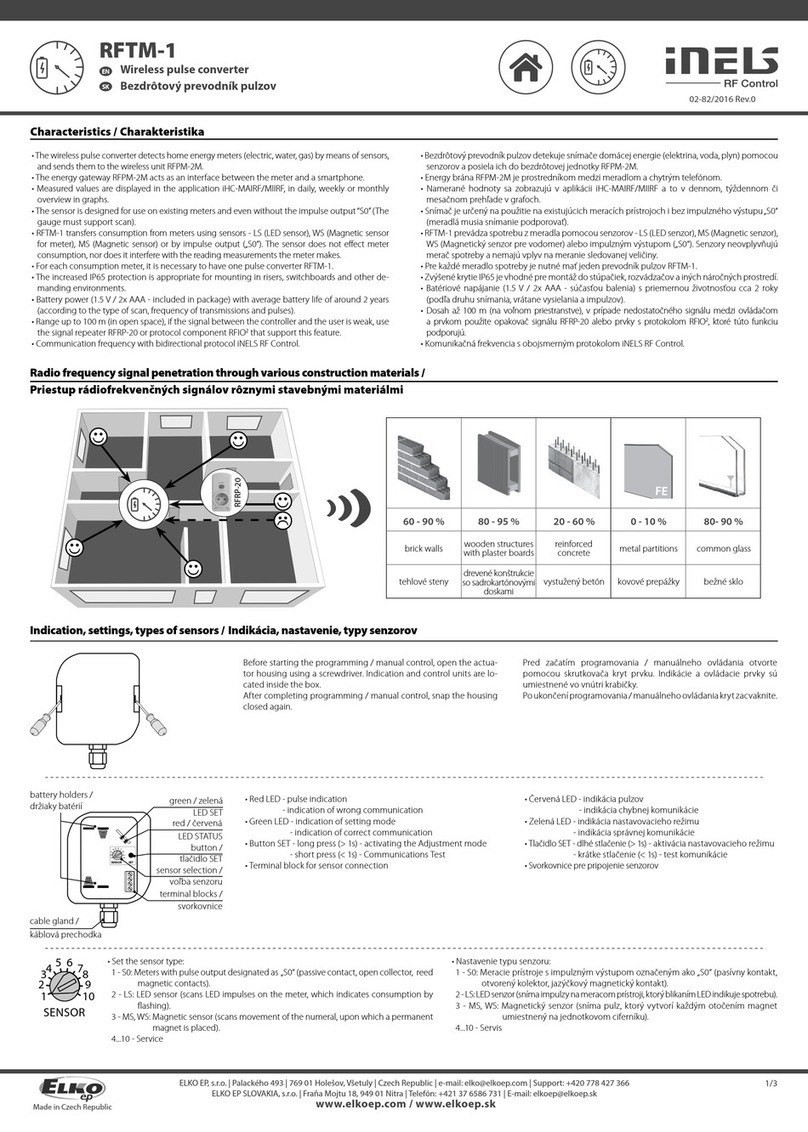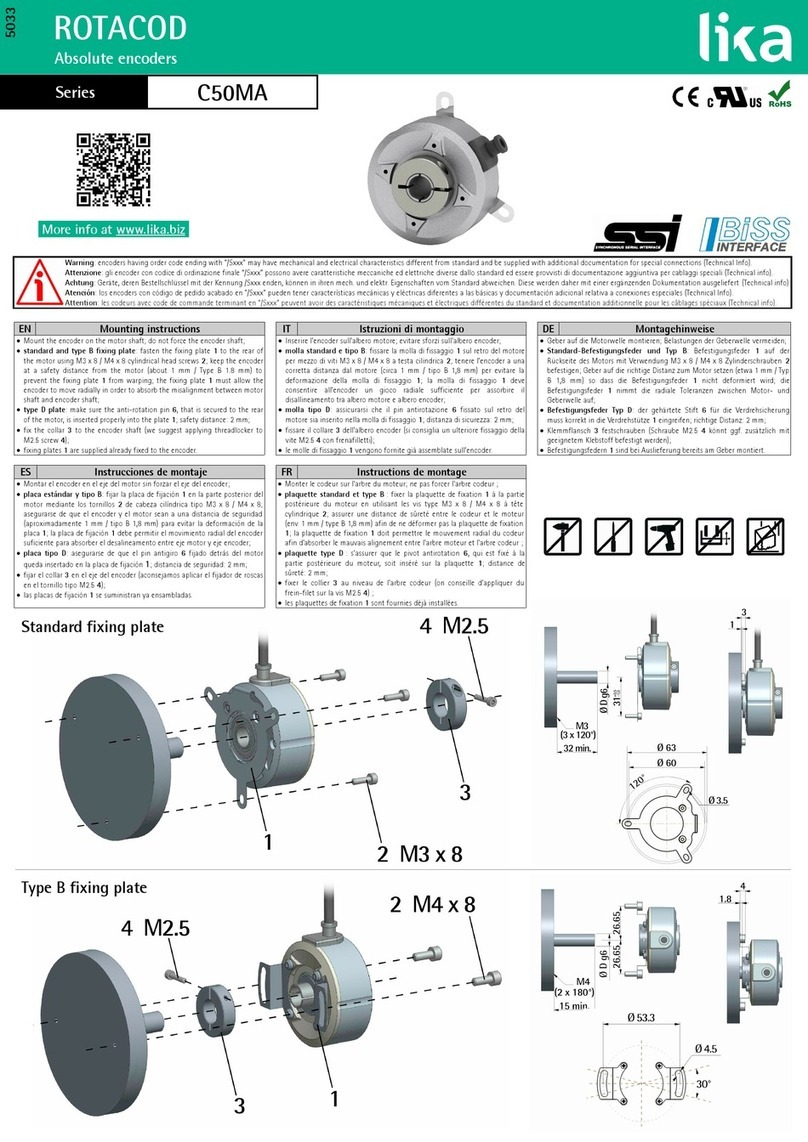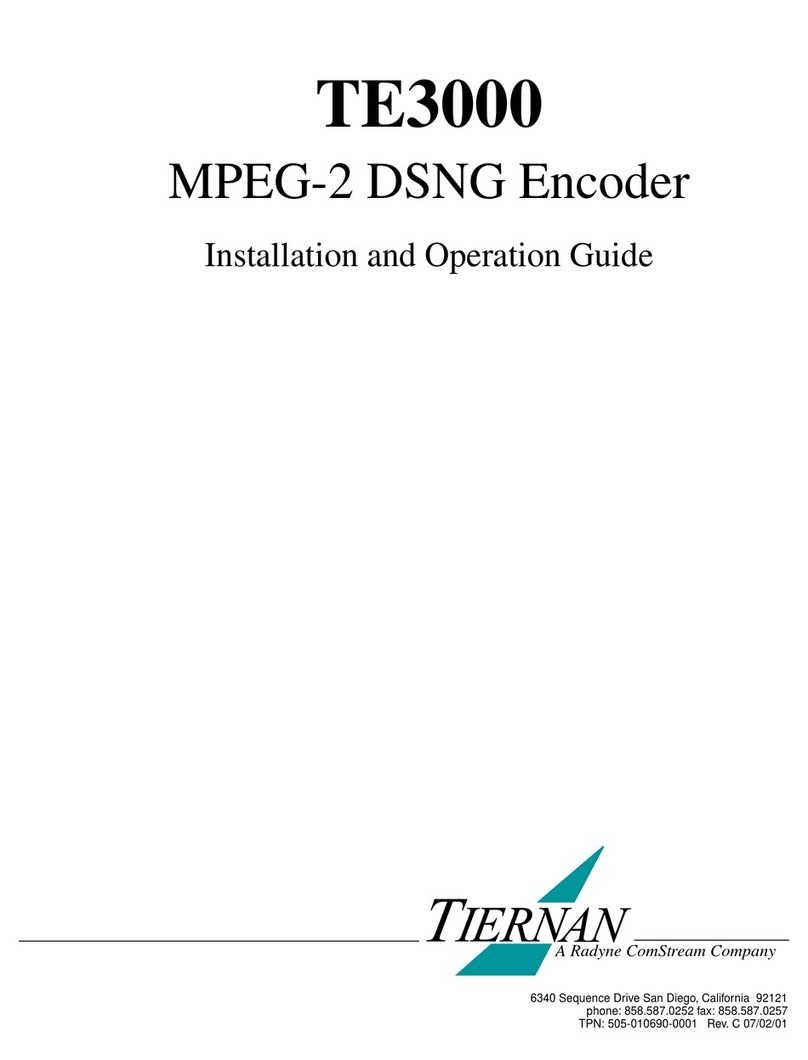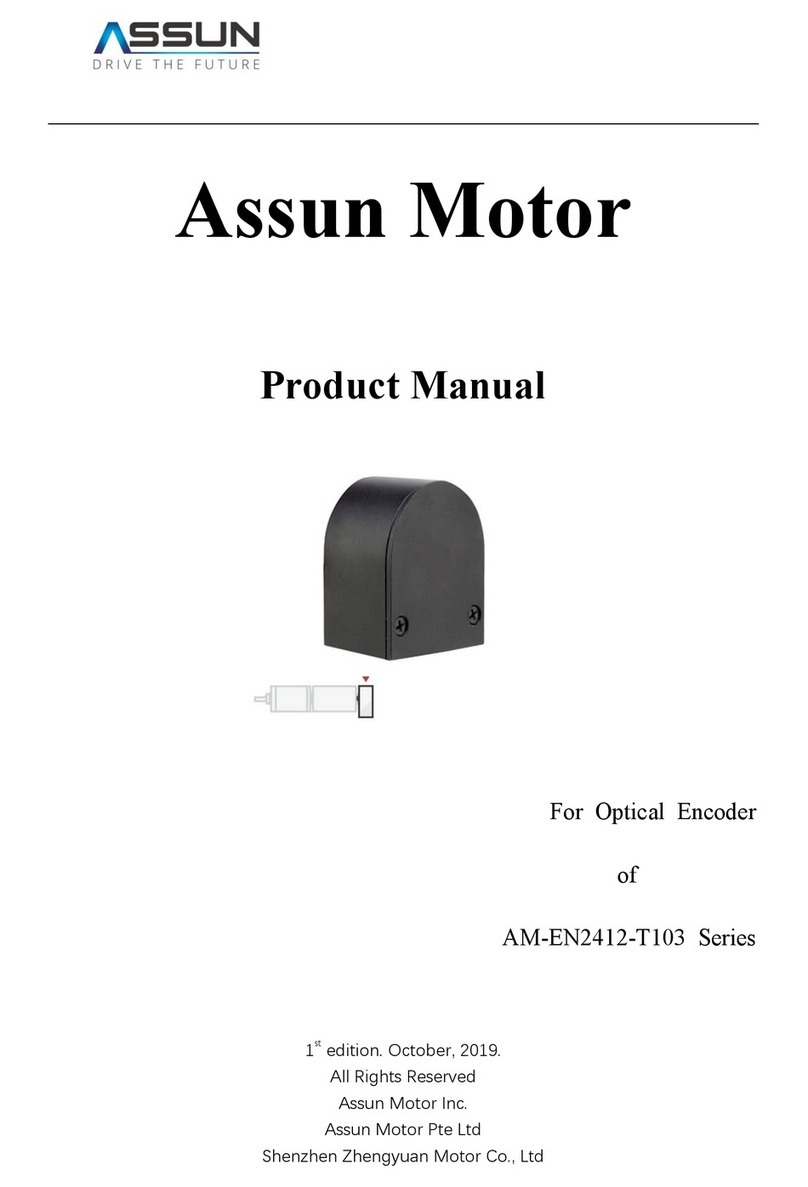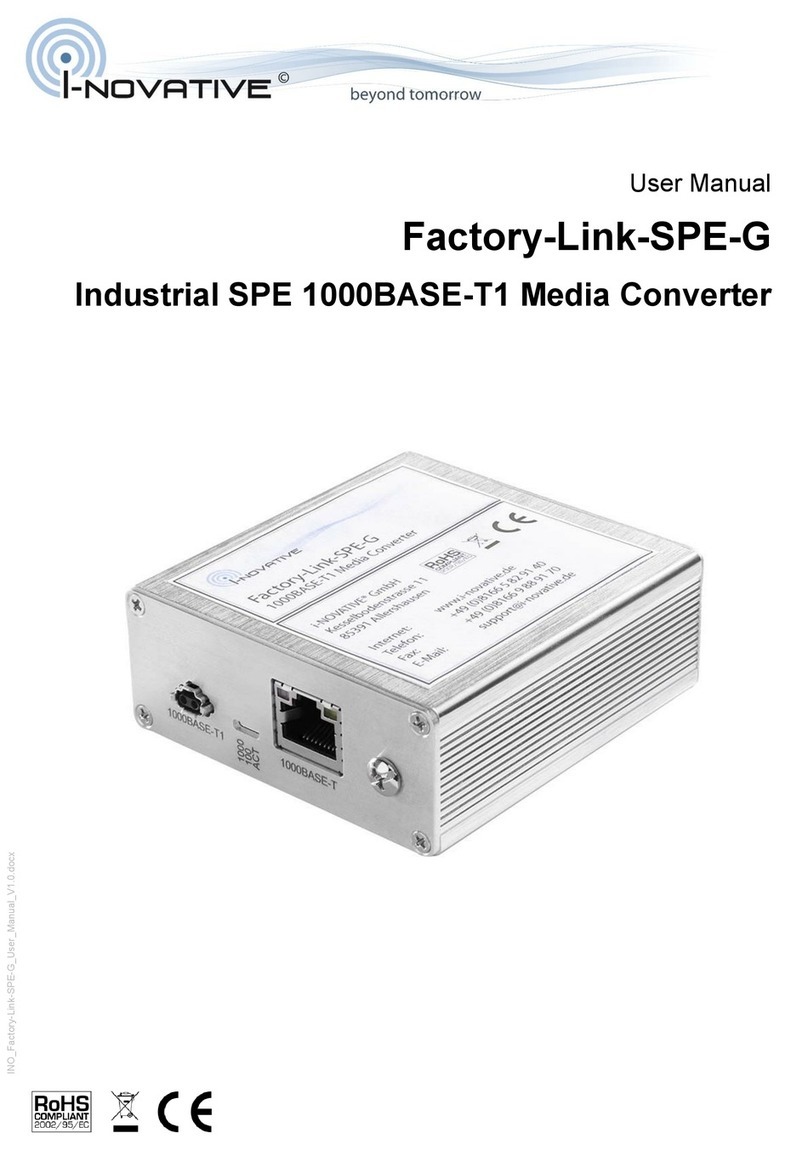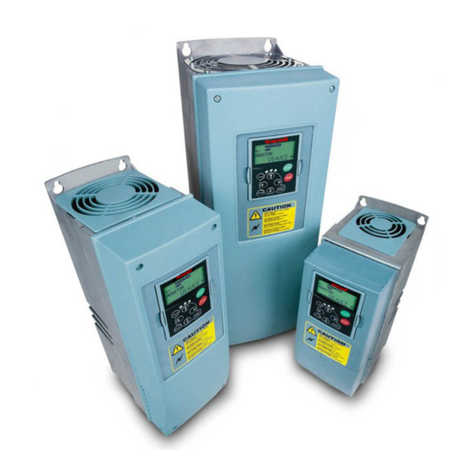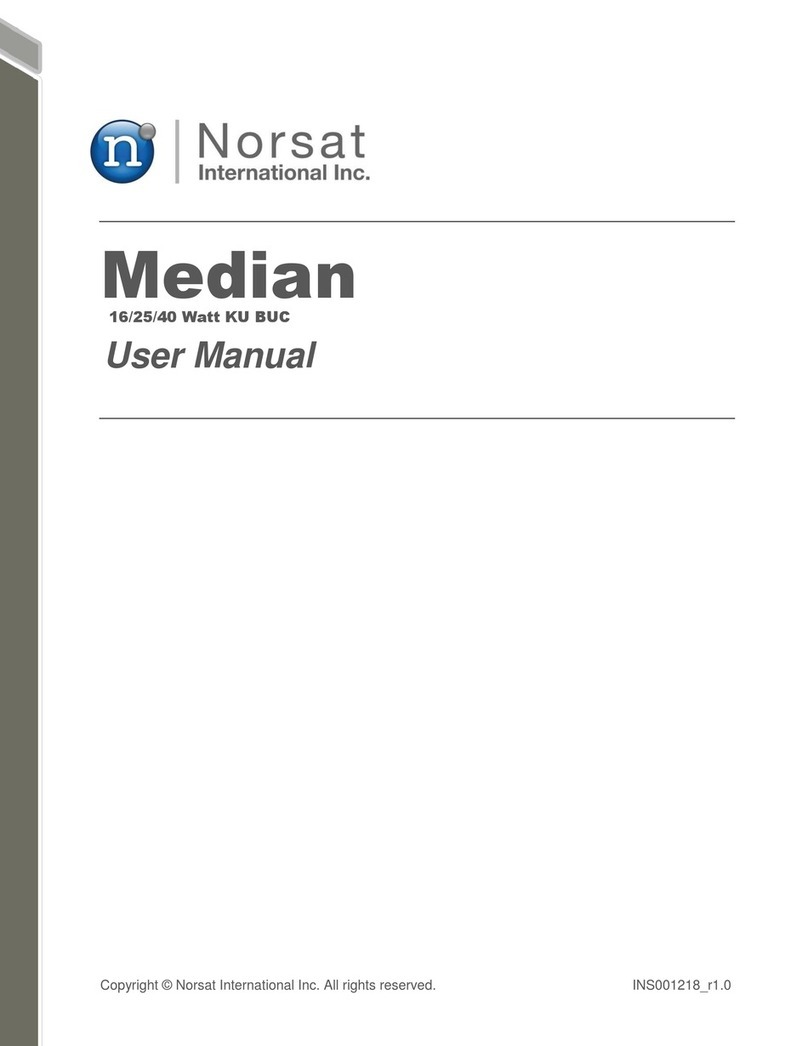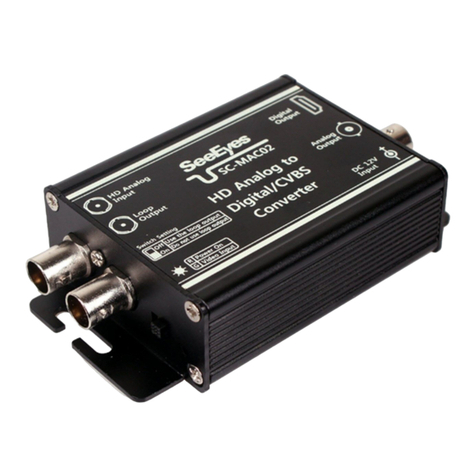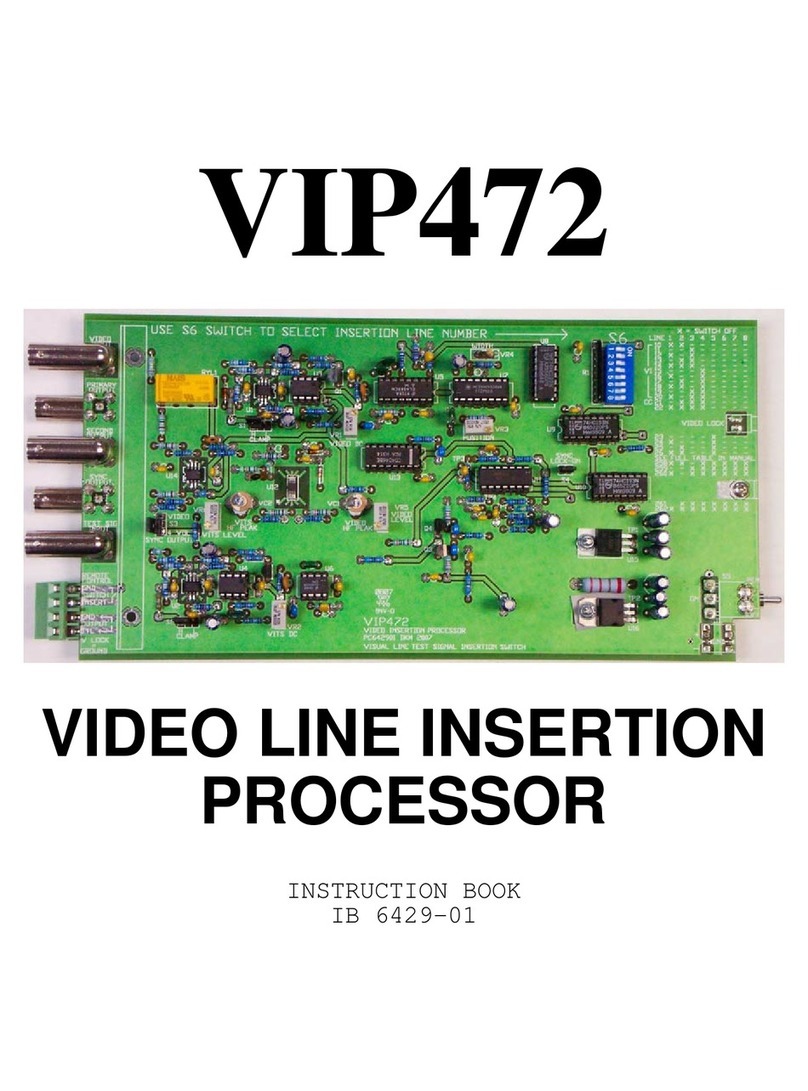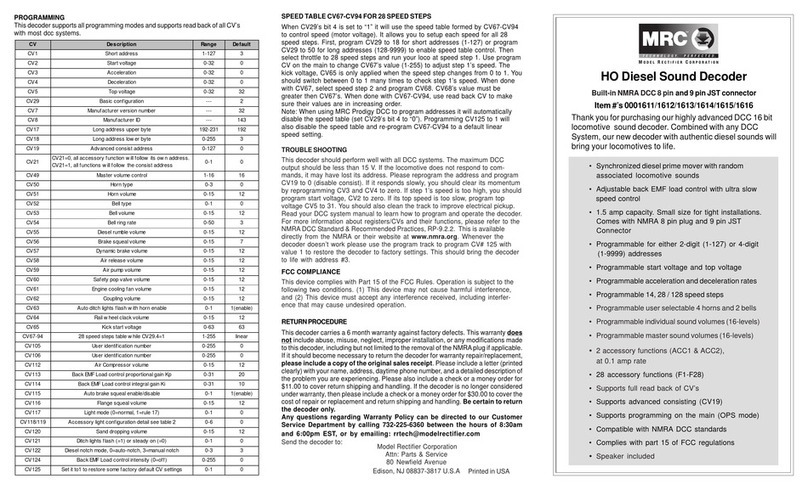Audial AYA 5 User manual

AYA 5
USER MANUAL
Revision A, October 2021

IMPORTANT!
1. This manual is a guide only.
2. Do not expose this device to rain or moisture, excessive heat or mechanical force.
3. Use this device exclusively with specified voltages.
4. Unplug the device from the wall outlet during a lightning storm.
Copyright © 2021, Audial d.o.o.
www.audialonline.com
This manual comprises introducing information on the use and performance of this device. For more
information, please refer to the Audial website, or send your questions to [email protected].

AYA 5 DAC
Audial AYA 5 is a high quality, TDA1541A based non-
oversampling D/A converter, with USB, S/PDIF
electrical (coaxial), and S/PDIF optical inputs.
The AYA 5 USB input stage operates as an
asynchronous (master) USB device, so it also
generates the clock signal for the D/A conversion. Two
low jitter clocks are included, one that works with
44.1/88.2/176.4/352.8 kHz, and the other that works
with 48/96/192/384 kHz audio sampling frequencies.
This way the unit achieves a clean clocking scheme,
and all the audio clock signals in the system are
generated only by frequency dividing, and not by
using PLL synthesizers.
With this USB input, the AYA 5 supports sampling rates
up to 384 kHz. Please note that the Windows audio
does not support operation above 192 kHz, so the
ASIO driver is required to utilize this feature.
The USB stage also provides galvanic decoupling
between the USB and D/A stage, thus separating
possibly noisy PC from audio circuits.
The AYA 5 USB stage supports the four channel
operation. The first two channels D/A conversion is
performed by its own D/A stage, so the AYA 5 normally
operates as a stereo DAC, while two additional
channels are available as a digital output on the HDMI
connector, which complies with Audial A-link
specifications. The third channel is available at pin 1,
and the fourth channel at pin 10. Detailed A-link
specifications are available on the Audial website.
The AYA 5 also employs 75 Ohm BNC, transformer
coupled S/PDIF, and optical input, operational up to
96 kHz Fs.
Optionally, the AYA 5 can also provide a PCM direct
input to TDA1541A, by using HDMI (A-link), or by using
the set of PCB U.FL connectors, and these inputs can
accept either I2S or Philips simultaneous data
protocol. Detailed information about this AYA 5
optional feature is provided separately, to the AYA 5
customers.
USING THE AYA 5
The AYA 5 mains connector and switch are located on
the backplate, while the input selector is located on the
front plate, along with the power LED indicator.
The AYA 5 DAC is easy to use device, and normally it
requires no special maintenance or care.
It is however not recommended to leave the AYA 5
permanently powered up, because its D/A converter
chip (TDA1541A) is a classic TTL architecture, so it
dissipates more power than it is usual for devices of this
kind these days. Generally, leaving the AYA 5 powered
off overnight will ensure many years of reliable
operation.
The AYA 5 achieves claimed technical performance
(distortion, frequency response, etc.) right from the
start, however it needs a couple of weeks of burning in
to perform its best in subjective sonic terms.
WARRANTY
Audial claims proper working of this product for two
years. Audial is obliged to correct any malfunction
within this period, at no charge, either by competent
repair service, or by swapping the sold unit with the
new one.
For the units sold directly by Audial, the invoice is also a
guarantee certificate. Since Audial maintains database
of directly sold units, the original buyers in most cases
won’t need it. Warranty is still fully transferrable from
the original to the subsequent owner(s), however in
this case we will probably ask for the invoice.
3
Audial AYA 5

4
USB AUDIO CLASS 2.0
The AYA 5 USB stage employs the USB Audio Class 2.0
definitions.
Mac OS X and Linux are natively USB Audio Class 2.0
compliant for several years now, and this device hence
does not require special driver when used with Mac OS
X or Linux.
Since September 2017, Windows 10 (1703) also
supports USB Audio Class 2.0 definitions, so the AYA 5
is plug and play with recent Windows 10 too. Once it is
connected to the Windows 10 machine, the small
window will pop up in the bottom right corner of the
screen, reporting about the initial connection routine,
and once this process is finished, the device can be
found as a playback audio device, available in the
system.
DEDICATED WINDOWS USB DRIVER
In addition, Audial provides a dedicated Windows USB
driver for this device, which is still necessary with earlier
Windows versions. This driver also provides additional
functionality such as firmware update, ASIO interface,
buffer length control, and it can be generally preferred
soundwise.
Users can download this driver from the Audial
website. Driver version 1.26 can be installed to
Windows XP, Vista, 7, 8, 8.1 and 10. Later driver version
2.10 however improves on compatibility with later PC
systems, and can be installed to Windows 7, 8, 8.1, and
10. All driver versions are compatible with both 32 and
64-bit Windows. Please however note that the driver
version 2.10 does not support 4 channel functionality.
To install the driver, please unzip the provided file, and
run setup.exe. The installation window will pop up, and
at one stage you will be asked to connect the device.
Also, during this process, depending on your Windows
version and security settings, you might be asked a
couple of times to allow the installation, so please do
so. These windows will look like this.
Once the installation is complete, you can configure
your settings by using the control panel, available in
Windows Start Menu -> Audial.
Audial AYA 5

5
Audial AYA 5
USB CHANNELS CONFIGURATION
The AYA 5 USB stage offers four channel functionality,
yet its use as a USB stereo DAC is straightforward.
In Windows, the channels can be configured at Control
Panel -> Sound. Under the Playback tab you will find
the Audial USB device, and Configure button will pop
up another, a self-descriptive window.
In most cases, for stereo operation, this can be set to
either Stereo or Quadraphonic, with no change
regarding the first two (front) channels.
If set to Quadraphonic, the first two channels are
normally available at AYA 5 analog outputs, while two
more (rear) channels will be available as a digital
output at its A-link (HDMI) output connector.
For more advanced multichannel operation, it is
recommended to use dedicated audio software.
Foobar2000 is a good starting point, for its "Custom
channel mapping" for ASIO output, and digital
"Crossover" plugin.

6Audial AYA 5
AYA 5 front plate
AYA 5 back plate
From left to right:
RCA output connectors,
S/PDIF BNC input connector, S/PDIF optical input connector,
PCM A-link output connector, USB input connector,
mains connector, mains switch.
AYA 5
D/A CONVERTER
OPT
BNC USB
!FUSE T1A
AYA 5 #A00-0021
Made in Serbia
POWER
220-240VAC ~50-60Hz
USB
S/PDIF
LEFT
RIGHT OPT A-LINK OUT
!

7
Audial AYA 5
SPECIFICATIONS
INPUTS:
USB 2.0, supports 2.0 Class Definitions for Audio Devices, asynchronous operation; Fs max 384 kHz
S/PDIF, 75 Ohm BNC; Fs max 96 kHz
S/PDIF optical; Fs max 96 kHz
Optional: PCM direct, by A-link HDMI and U.FL PCB connectors; I2S or Philips simultaneous data protocol
OUTPUT:
Analog output RCA, 2.1 V RMS, output impedance 100 Ohm
The 3rd and 4th channels from the USB input are available at A-link output pins 1 and 10; V = 2.8 V typical
HI
FREQUENCY RESPONSE:
Sin(x)/x equivalent:
@ fS=44.1kHz: -3.2dB @ 20kHz
@ fS=88.2kHz: -0.8dB @ 20kHz
@ fS=192kHz: -0.2dB @ 20kHz
@ fS=384kHz: -0.1dB @ 20kHz
TRANSIENT RESPONSE:
Clean, with no overshoot or ringing
ABSOLUTE PHASE:
Correct (non-inverting)
HARMONIC DISTORTION (@ 1kHz):
0.01% @ -6dBFS (I/V dominated)
0.006% @ -12dBFS (I/V dominated)
0.9% @ -60dBFS(D/A dominated)
INTERMODULATION DISTORTION (CCIR):
0.01%
MAINS VOLTAGE:
220-240VAC/50-60Hz or 110-120VAC/50-60Hz
DIMENSIONS (W x D x H):
347x 220 x 64 mm, including feet, but excluding knob and connectors
NET WEIGHT:
Approx. 3.1 Kg

Copyright © 2021
Table of contents
Other Audial Media Converter manuals
